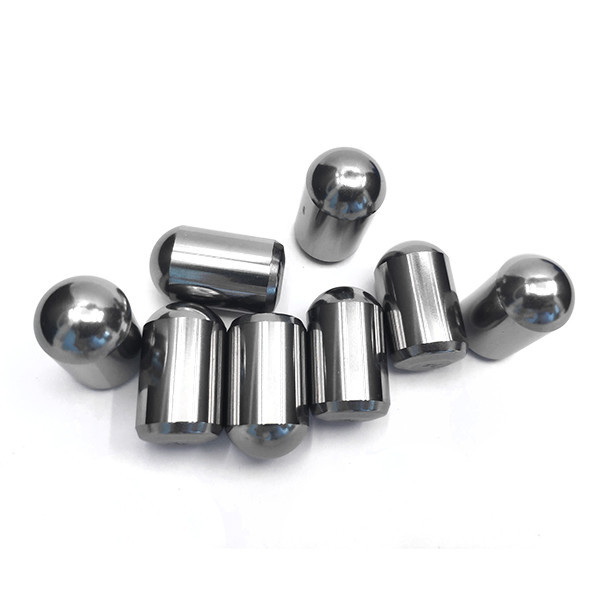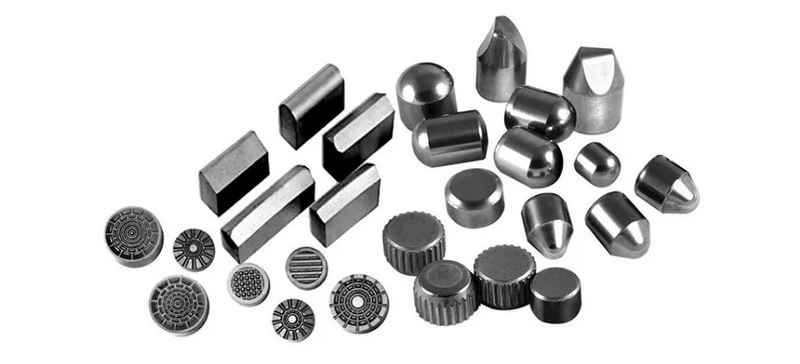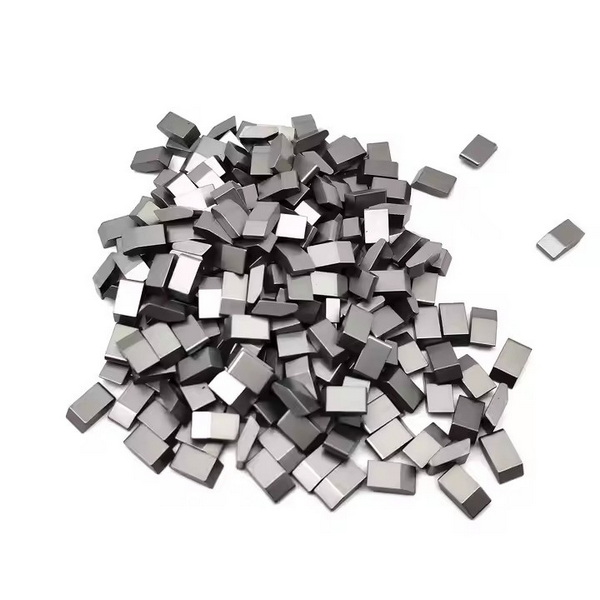Content Menu
● Introduction to Carbide Industrial Products CC
>> Tungsten Carbide Applications
>>> Turning and Facing Operations
>>> Milling Operations
>> Silicon Carbide Applications
>>> Electronics Sector
● Industrial Applications of Carbide Industrial Products CC
>> 1. Cutting Tools and Machining
>> 2. Aerospace and Defense
>> 3. Oil and Gas Exploration
>> 4. Mining and Construction
>> 5. Advanced Manufacturing and Emerging Trends
>>> Integration with 3D Printing
>>> Renewable Energy Applications
● Benefits of Using Carbide Industrial Products CC
● Challenges and Future Developments
● Conclusion
● Frequently Asked Questions
>> 1. What are the primary applications of carbide industrial products CC?
>> 2. How do carbide industrial products CC enhance manufacturing efficiency?
>> 3. What are the key properties of tungsten carbide?
>> 4. Can carbide industrial products CC be recycled?
>> 5. How do coatings affect the performance of carbide industrial products CC?
● Citations:
Carbide industrial products CC, such as tungsten carbide and silicon carbide, are versatile materials that have revolutionized various industries with their exceptional hardness, wear resistance, and thermal stability. These products are widely used in cutting tools, wear-resistant components, and other specialized applications across industrial, military, metallurgical, oil drilling, mining, and construction sectors. In this article, we will delve into the diverse applications of carbide industrial products CC and explore how they contribute to efficiency and precision in modern manufacturing.

Introduction to Carbide Industrial Products CC
Carbide industrial products CC are primarily composed of tungsten carbide (WC) and silicon carbide (SiC), among others. Tungsten carbide, in particular, is renowned for its extreme hardness and durability, making it an ideal material for cutting tools and wear-resistant parts. Silicon carbide, on the other hand, is valued for its high thermal conductivity and resistance to corrosion, which makes it suitable for applications in the electronics and aerospace industries.
Tungsten Carbide Applications
Tungsten carbide is the most commonly used carbide material in industrial applications. It is widely employed in the production of cutting tools such as drills, end mills, and inserts due to its high wear resistance and toughness. These tools are essential in machining operations like turning, milling, and drilling, where maintaining sharp edges and withstanding high temperatures are crucial.
Turning and Facing Operations
Carbide inserts excel in turning and facing operations, providing high-speed cutting with excellent surface finish. Whether it's machining steel, cast iron, or exotic alloys, carbide inserts deliver superior performance, reducing cycle times and improving productivity.
Milling Operations
Carbide inserts are widely used in milling operations for creating complex shapes and contours. From roughing to finishing, these inserts offer high cutting speeds, exceptional stability, and extended tool life, making them ideal for both heavy-duty and precision milling applications.
Silicon Carbide Applications
Silicon carbide is another important carbide material used in industrial applications. It is valued for its high thermal conductivity and resistance to corrosion, making it suitable for applications in the electronics and aerospace industries.
Electronics Sector
In the electronics sector, silicon carbide is used in semiconductors, LEDs, and power electronics due to its high thermal conductivity and wide bandgap properties.
Industrial Applications of Carbide Industrial Products CC
Carbide industrial products CC are utilized across a wide range of industries due to their exceptional properties.
1. Cutting Tools and Machining
Carbide cutting tools are essential in machining operations such as turning, milling, and drilling. They provide superior hardness, wear resistance, and high heat tolerance, enabling manufacturers to achieve high precision and repeatability in their production processes.
2. Aerospace and Defense
In the aerospace and defense sectors, carbide industrial products CC are used for their precision and reliability. From machining turbine blades to producing military ammunition, these products deliver high-quality surface finishes and dimensional accuracy.
3. Oil and Gas Exploration
In the oil and gas industry, carbide products are used in drilling tools and wear-resistant components due to their ability to withstand harsh conditions and maintain performance over time.
4. Mining and Construction
Carbide industrial products CC are also critical in mining and construction applications, where they are used in drill bits and saw blades to enhance durability and efficiency.
5. Advanced Manufacturing and Emerging Trends
In advanced manufacturing, carbide industrial products CC are being integrated with technologies like 3D printing and CNC machining to create complex geometries and customized parts. Additionally, there is a growing trend towards using carbide materials in renewable energy applications, such as wind turbines and solar panels, where their durability and resistance to corrosion are invaluable.
Integration with 3D Printing
The integration of carbide materials with 3D printing technology allows for the creation of complex tool geometries that cannot be produced through traditional machining methods. This combination enhances tool performance and extends tool life, offering significant advantages in terms of precision and cost-effectiveness.
Renewable Energy Applications
In renewable energy sectors, carbide industrial products CC are used in components that require high durability and resistance to environmental factors. For example, in wind turbines, carbide-coated components can withstand harsh weather conditions, ensuring consistent performance and extending the lifespan of critical parts.

Benefits of Using Carbide Industrial Products CC
The use of carbide industrial products CC offers several benefits, including:
- Enhanced Durability: Carbide tools and components have a longer lifespan compared to other materials, reducing the need for frequent replacements.
- Improved Efficiency: Carbide products enable faster machining operations and better surface finishes, leading to increased productivity.
- Cost Savings: Despite higher initial costs, the extended tool life and reduced maintenance needs of carbide products result in long-term cost savings.
Challenges and Future Developments
While carbide industrial products CC offer numerous advantages, there are challenges associated with their production and application. For instance, the high cost of raw materials and the complexity of manufacturing processes can limit accessibility. However, ongoing research and development are focused on improving manufacturing techniques, reducing costs, and expanding the range of applications for these versatile materials.
Conclusion
Carbide industrial products CC have become indispensable in modern manufacturing due to their exceptional hardness, wear resistance, and versatility. From cutting tools and wear-resistant components to specialized applications in aerospace and electronics, these products play a pivotal role in enhancing efficiency and precision across various industries. As technology continues to evolve, the demand for carbide industrial products CC is expected to grow, driving innovation and productivity in the manufacturing sector.

Frequently Asked Questions
1. What are the primary applications of carbide industrial products CC?
Carbide industrial products CC are primarily used in cutting tools, wear-resistant components, and specialized applications across industries such as aerospace, automotive, oil drilling, mining, and construction.
2. How do carbide industrial products CC enhance manufacturing efficiency?
Carbide products enhance manufacturing efficiency by providing superior hardness and wear resistance, allowing for faster machining operations and better surface finishes, which leads to increased productivity and cost savings.
3. What are the key properties of tungsten carbide?
Tungsten carbide is known for its extreme hardness, high wear resistance, excellent thermal stability, good corrosion resistance, and high tensile strength, making it ideal for cutting tools and wear-resistant components.
4. Can carbide industrial products CC be recycled?
Yes, carbide industrial products CC can be recycled. Worn-out tools and scrap material can be reclaimed and reused, reducing waste and conserving resources.
5. How do coatings affect the performance of carbide industrial products CC?
Coatings like titanium nitride (TiN) can enhance the hardness, reduce friction, and increase corrosion resistance of carbide products, further improving their performance and lifespan.
Citations:
[1] https://www.linkedin.com/pulse/top-10-applications-carbide-inserts-modern-industries-brjqc
[2] https://nanografi.com/blog/carbides-from-atomic-structure-to-industrial-applications-nanografi-/
[3] https://www.hydrocarbide.com/our-markets/
[4] https://www.alamy.com/stock-photo/carbide-insert.html
[5] https://www.istockphoto.com/photos/carbide
[6] https://www.retopz.com/57-frequently-asked-questions-faqs-about-tungsten-carbide/
[7] https://www.carbideburr.net/faq/
[8] https://www.zzsinocarbide.com/faq.html
[9] https://www.carbide-products.com/blog/applications-of-carbide/
[10] https://www.estoolcarbide.com/article/how-do-different-industries-benefit-from-the-use-of-carbide-inserts-in-their-applications--newsinfo-47.html
[11] https://www.defence-industries.com/articles/carbide-dies-and-military-applications
[12] https://www.cobracarbide.com/understanding-industrial-carbide-cutting-tools/
[13] https://fmcarbide.com/blogs/techtalks/carbide-tool-services-the-most-common-uses-for-carbide
[14] https://www.gwstoolgroup.com/understanding-the-different-types-of-carbide-in-cutting-tools/
[15] https://www.carbidetek.com/faqs/
[16] https://www.allied-material.co.jp/en/techinfo/tungsten_carbide/use.html
[17] https://www.rroij.com/open-access/the-benefits-of-using-carbide-tools-in-manufacturing.php?aid=92754
[18] https://eurobalt.net/blog/2022/03/28/all-the-applications-of-tungsten-carbide/
[19] https://www.mmc-carbide.com/in/technical_information/tec_guide/tec_guide_carbide
[20] https://www.cip.co.za
[21] https://www.zhongbocarbide.com/what-are-the-most-common-carbide-industrial-products-used-today.html
[22] https://www.carbide-products.com/products/customized-military-mining-carbide-wear-parts/
[23] https://www.manufacturingtomorrow.com/article/2019/08/5-ways-carbide-metal-compound-is-used-in-the-manufacturing-industry/13794
[24] https://fmcarbide.com/blogs/techtalks/uses-for-carbide
[25] https://www.kennametal.com/in/en/industries/defense.html
[26] https://huanatools.com/applications-of-carbide-end-mill-in-different-industries/
[27] https://lihuacarbide.en.made-in-china.com/product/YwSAZfJrgLhD/China-Carbide-Conical-Buttons-for-Mining.html
[28] https://www.freepik.com/free-photos-vectors/carbide/29
[29] https://www.vecteezy.com/free-photos/carbide
[30] https://stock.adobe.com/search/images?k=carbide+cutting
[31] https://www.shutterstock.com/search/carbide
[32] https://www.shutterstock.com/search/carbide-cutting-tools
[33] https://stock.adobe.com/search?k=carbide
[34] https://www.istockphoto.com/photos/carbide-tools?page=2
[35] https://www.shutterstock.com/search/carbide-tools
[36] https://stock.adobe.com/search?k=tungsten+carbide
[37] https://www.istockphoto.com/photos/carbide-tip
[38] https://carbidetools.nz/faqs/
[39] https://guide.resumegemini.com/interviews/top-10-questions-for-carbide-tool-die-maker-interview/
[40] https://carbideprocessors.com/pages/company-info/frequently-asked-questions.html
[41] https://www.reddit.com/r/turning/comments/zmutaq/questions_about_carbide/
[42] https://www.bloomberg.com/profile/company/0323965D:SJ
[43] https://tuncomfg.com/about/faq/
[44] https://gdptooling.com/frequently-asked-questions-on-cutting-tools/
[45] https://carbide3d.com/hub/faq/
[46] https://www.tungco.com/insights/blog/frequently-asked-questions-used-tungsten-carbide-inserts/
[47] https://www.exactaform.com/blog/five-key-considerations-in-solid-carbide-tool-design/
[48] https://www.psmindustries.com/yillik/carbide-direct-from-tungsten-carbide-manufacturer
[49] https://www.azom.com/article.aspx?ArticleID=18084
[50] https://epictool.ca/carbide-cutting-tools-the-most-common-uses-for-carbide/
[51] https://www.gettyimages.in/photos/carbide
[52] https://www.istockphoto.com/photos/carbide-tools
[53] https://fractory.com/milling-cutters-and-tools/
[54] https://www.generalcarbide.com/wp-content/uploads/2019/04/GeneralCarbide-Designers_Guide_TungstenCarbide.pdf
















